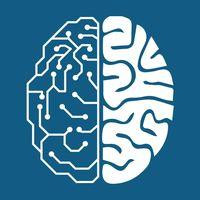Detecting AI-Driven Content in Online Discourse
In today's digital landscape, the advent of artificial intelligence (AI) has introduced unprecedented capabilities in content generation, challenging our ability to discern between human and machine-generated text. As AI language models like GPT-3 and ChatGPT become more sophisticated, detecting AI-driven content has become increasingly vital for preserving authenticity and trustworthiness in online discourse. This article explores the complexities of detecting AI-driven content and provides strategies for navigating the digital frontier with vigilance.
The Ascendancy of AI-Driven Content
AI-driven content has permeated various online platforms, from social media interactions to news articles and customer service chatbots. These AI models have the capacity to produce text that closely mimics human language, blurring the lines between authentic and AI-generated content. As a result, discerning the origin of online content has become a formidable challenge in the digital age.
Challenges in Detection
Detecting AI-driven content poses multifaceted challenges due to the nuanced nature of AI language models. Conventional detection methods such as keyword analysis and grammar checks are often inadequate in distinguishing between human and AI-generated text. Furthermore, AI-generated content can exhibit subtle linguistic nuances and contextual appropriateness, making it challenging to identify through manual scrutiny alone.
Tools and Techniques for Detection
A range of tools and techniques have emerged to aid in the detection of AI-driven content. Platforms like GPT Zero Detector, ChatGPT Zero Checker, and GPTZero AI Detector employ machine learning algorithms to analyze text samples and identify patterns indicative of AI involvement. Additionally, linguistic analysis and sentiment analysis can provide valuable insights into the likelihood of AI-generated content.
Strategies for Identification
Implementing effective strategies is crucial for accurately identifying AI-driven content. Combining automated detection tools with human review processes can enhance detection accuracy and reliability. Furthermore, comparing text samples against known AI-generated content databases and conducting linguistic analysis can help uncover subtle indications of AI involvement.
Applications in Various Domains
The ability to detect AI-driven content has significant implications across various domains. In academia, tools like AI Checker for Teachers and AI Detector Plagiarism can help educators uphold academic integrity by identifying instances of AI-generated content in student submissions. Similarly, in professional settings, platforms like Chat AI Detector and Chat GPT Tester can verify the authenticity of messages and emails, ensuring credibility in business communication.
Ethical Considerations and Future Directions
Ethical considerations are paramount in the development and deployment of AI detection tools. Transparency, accountability, and user privacy protection must be prioritized to ensure responsible usage of these tools. Additionally, ongoing research and collaboration are essential for advancing detection methodologies and addressing emerging challenges in AI-driven content detection.
Conclusion: Navigating the Digital Landscape
In an era where AI-driven content proliferates online discourse, detecting and mitigating its influence is crucial for upholding authenticity and trustworthiness. By leveraging advanced detection tools, implementing effective strategies, and prioritizing ethical considerations, individuals and organizations can navigate the digital landscape with vigilance and integrity. Together, we can foster a digital environment where authenticity reigns supreme, ensuring meaningful and trustworthy communication for all.

Comments
Post a Comment